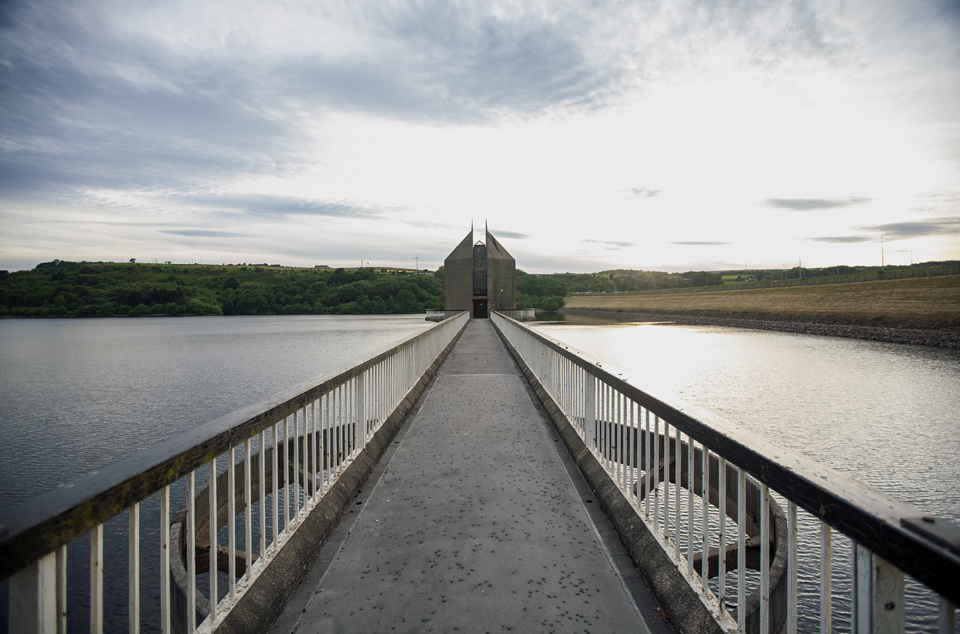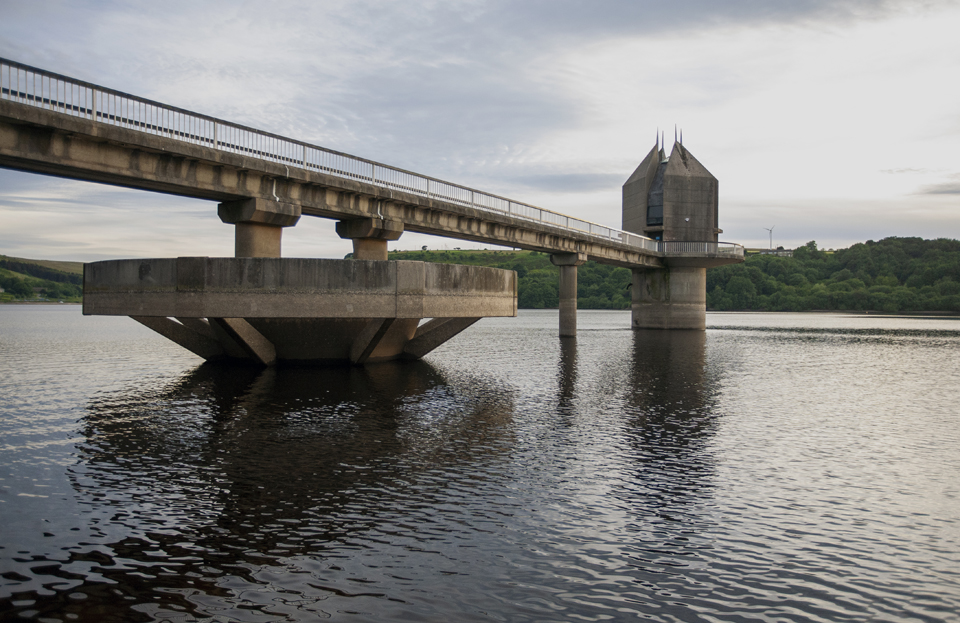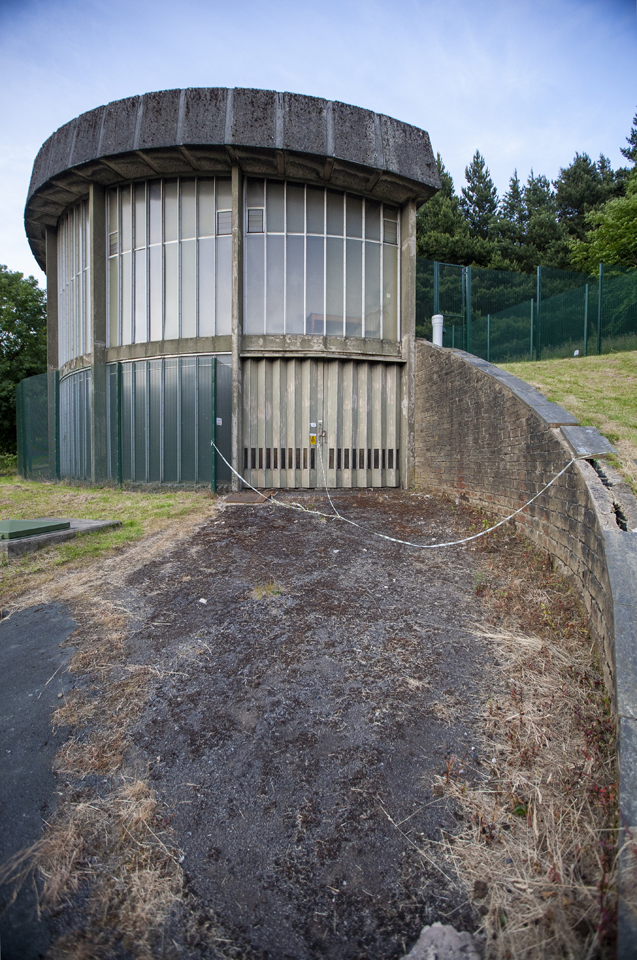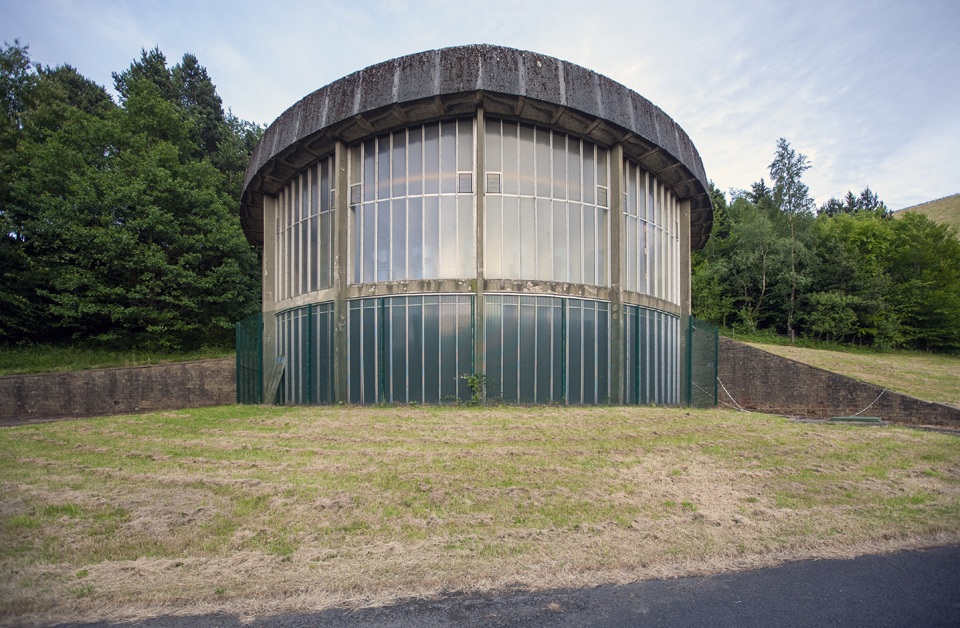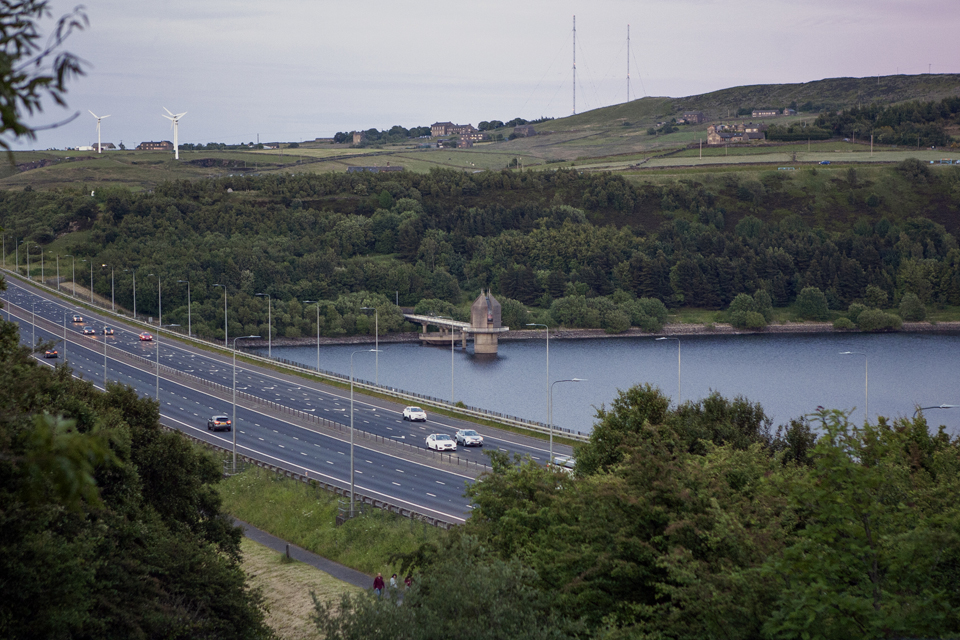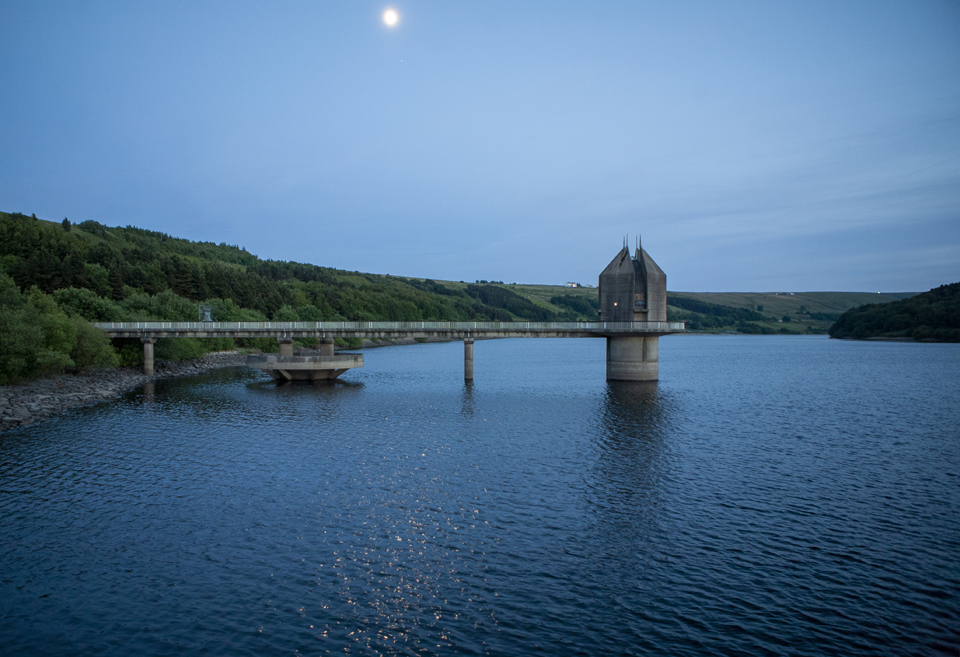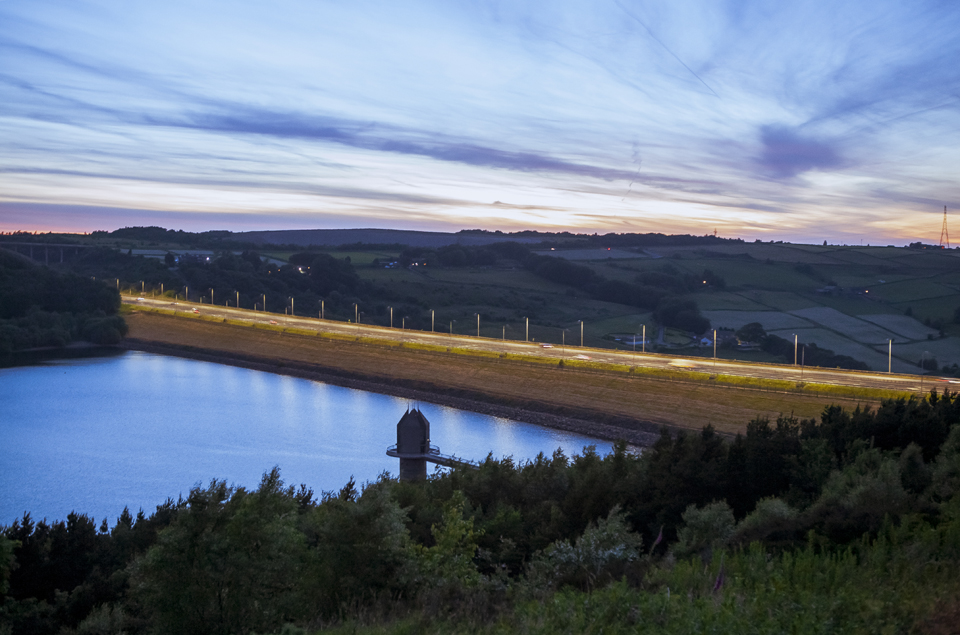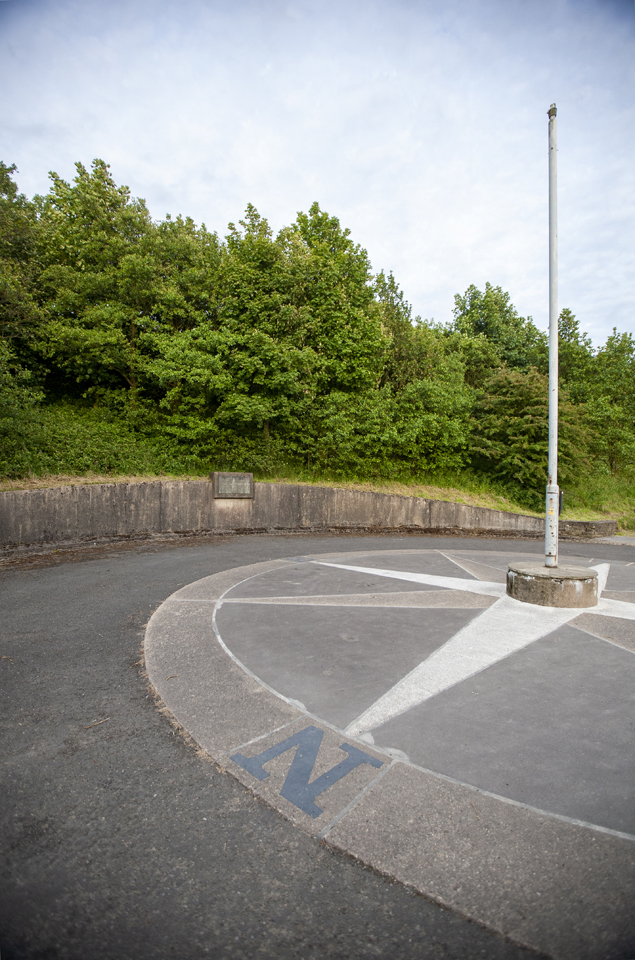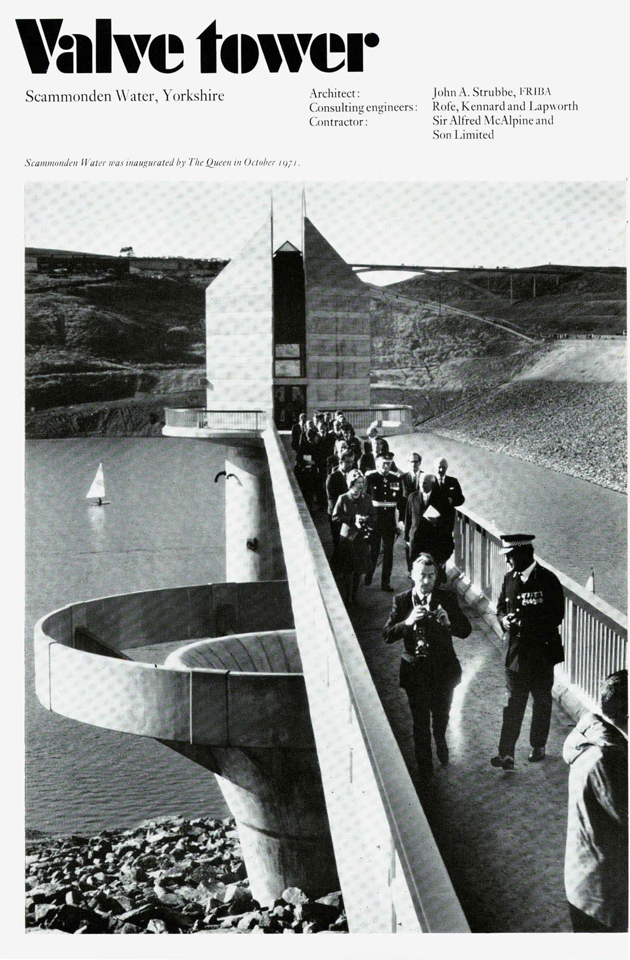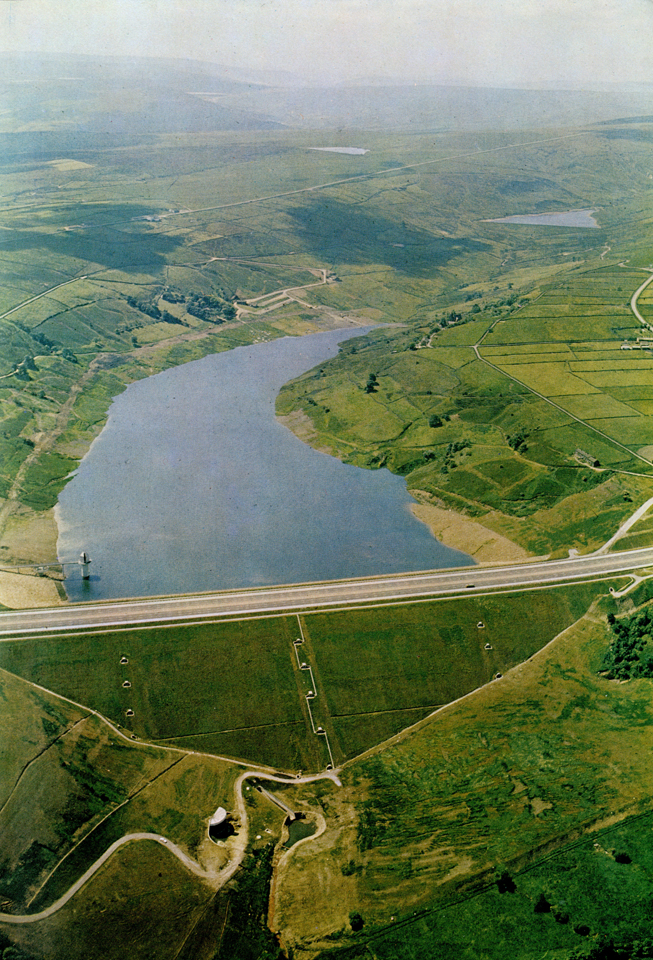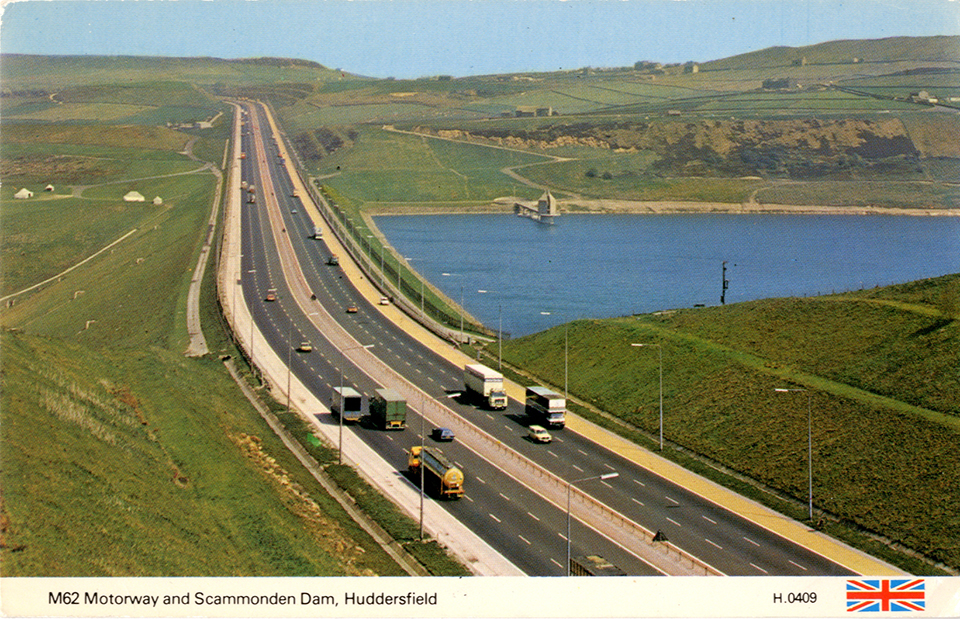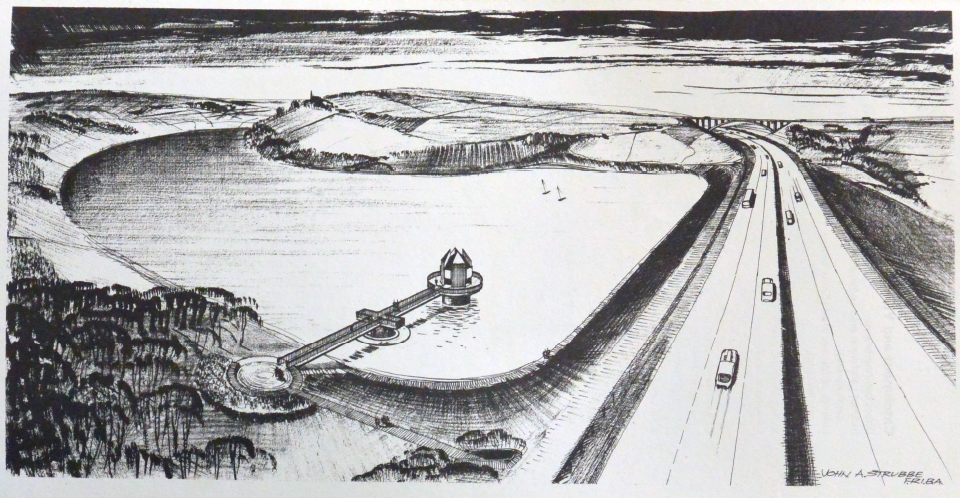Valve Tower and Pumphouse
1971
Scammonden was reputedly the world’s first dam-motorway hybrid. Nestled high in the Pennines, between Manchester and Leeds, the reservoir was needed to supply water to the town of Huddersfield and was part of a much larger system. The entire landscape was co-produced by agents of central government, county councils and local boroughs alongside design, technical and construction experts. The level of the dam and the carriageway that crosses it was determined by the volume of water required in negotiation with the elevation and climbs of the motorway and calculations concerning the amount of cut and spoil to achieve this balance. Vast amounts of engineering research into wind loading, snow protection, planting and water pressure were carried out by various national research organisations. The cuttings, bridge, dam, landscaping and hydrological engineering were a three-dimensional composition governed by predominantly functional demands. Amidst this massive feat, the architect John Alexander Strubbe was commissioned to design the buildings associated with the reservoir, namely the valve tower and the pumphouse. Strubbe was from Ham in Richmond, practised throughout the post-war period and had several water authority clients. He designed the Weir Wood Water treatment works in East Sussex (1955) and several buildings for Anglian Water around the River Ancholm (1978). At Scammonden the cylindrical valve tower is accessed via a bridge with a circular concrete bell mouth spill weir below. It is 48m (160ft) in overall height and contains a lift to access four draw off pipes set at different levels and connects via a tunnel to the spill weir. As if spliced into quarters, its in-situ cast reinforced concrete exterior, rises around a cruciform incision to four finials that give it medieval character. Something of a sentinel and a landmark, the tower was originally illuminated at night and has recently been restored to glow again. The tower is accessed via a tunnel beneath the motorway and the turning circle was embellished with inset slate letters of the compass points and a flagpole, largely for the purposes of providing a stage for the Queen who opened the M62 motorway in October 1971. The pumphouse is now fenced in but has a powerful raking concrete structure, the frame of which protrudes from the back and is tied into the hillside behind. The detailing of all the structures was informed by the exposed site, about 330m (1000ft) above sea level and notoriously windy and wet. The landscape architect was J.B. Blayney, based in Manchester and also responsible for the landscape design at Dovestones Reservoir near to Oldham.
